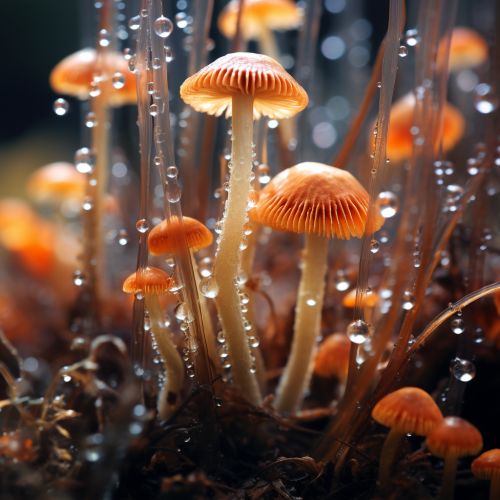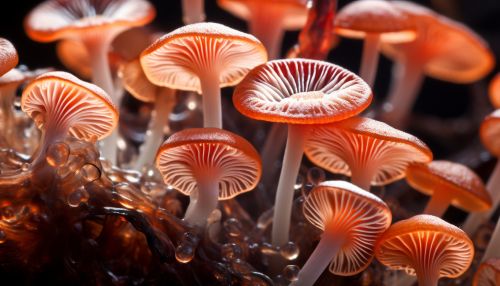Eurotiales
Taxonomy and Classification
Eurotiales is an order within the class Eurotiomycetes, which is a part of the phylum Ascomycota. This order is characterized by the presence of asci that are formed inside a cleistothecium, perithecium, or an apothecium. The asci are typically unitunicate and have a distinct operculum or a lid-like structure. The ascospores are usually single-celled and colorless, although some species may have multi-celled or colored ascospores.[1]


Genera
The order Eurotiales comprises several genera, including Aspergillus, Penicillium, and Talaromyces, among others. These genera are distinguished by their morphological characteristics, growth conditions, and genetic makeup.[2]
Aspergillus
Aspergillus is a genus of Eurotiales that includes approximately 200 species. These fungi are ubiquitous in the environment and can be found in soil, plant debris, and indoor environments. Some species of Aspergillus are important in industrial microbiology and are used in the production of citric acid, gluconic acid, and various enzymes. However, some species are pathogenic to humans and animals, causing a disease known as aspergillosis.[3]
Penicillium
Penicillium is another genus within the order Eurotiales, comprising over 300 species. These fungi are commonly found in soil, food, and indoor environments. Some species of Penicillium are of great importance in the food industry, being used in the production of cheese, while others are used in biotechnology for the production of antibiotics, such as penicillin.[4]
Talaromyces
Talaromyces is a genus of Eurotiales that includes species formerly classified in the genus Penicillium. These fungi are commonly found in soil and decaying organic matter. Some species of Talaromyces produce important industrial enzymes and antibiotics.[5]
Ecology and Distribution
Members of the order Eurotiales are cosmopolitan, being found in a wide range of habitats worldwide. They play a crucial role in the decomposition of organic matter, contributing to nutrient cycling in ecosystems. Some species are also associated with plants as endophytes or pathogens.[6]
Economic and Medical Importance
Eurotiales have significant economic and medical importance. Some species are used in food production and biotechnology, while others are pathogenic, causing diseases in humans and crops. The production of mycotoxins by some Eurotiales species is a major concern in food safety.[7]
See Also
- ↑ Lumbsch TH, Huhndorf SM. (December 2007). "Outline of Ascomycota – 2007". Myconet. Chicago, USA: The Field Museum, Department of Botany. 13: 1–58.
- ↑ Samson RA, Visagie CM, Houbraken J, et al. (2014). "Phylogeny, identification and nomenclature of the genus Aspergillus". Studies in Mycology. 78: 141–173.
- ↑ Bennett JW. (2010). "An Overview of the Genus Aspergillus". Aspergillus: Molecular Biology and Genomics. Caister Academic Press. pp. 1–17.
- ↑ Frisvad JC, Samson RA. (2004). "Polyphasic taxonomy of Penicillium subgenus Penicillium". Studies in Mycology. 49: 1–173.
- ↑ Yilmaz N, Visagie CM, Houbraken J, et al. (2014). "Polyphasic taxonomy of the genus Talaromyces". Studies in Mycology. 78: 175–341.
- ↑ Druzhinina IS, Kubicek CP. (2016). "Fungal Metabolites". The Mycota (A Comprehensive Treatise on Fungi as Experimental Systems for Basic and Applied Research). 15. Springer. pp. 1–39.
- ↑ Bennett JW, Klich M. (2003). "Mycotoxins". Clinical Microbiology Reviews. 16 (3): 497–516.
